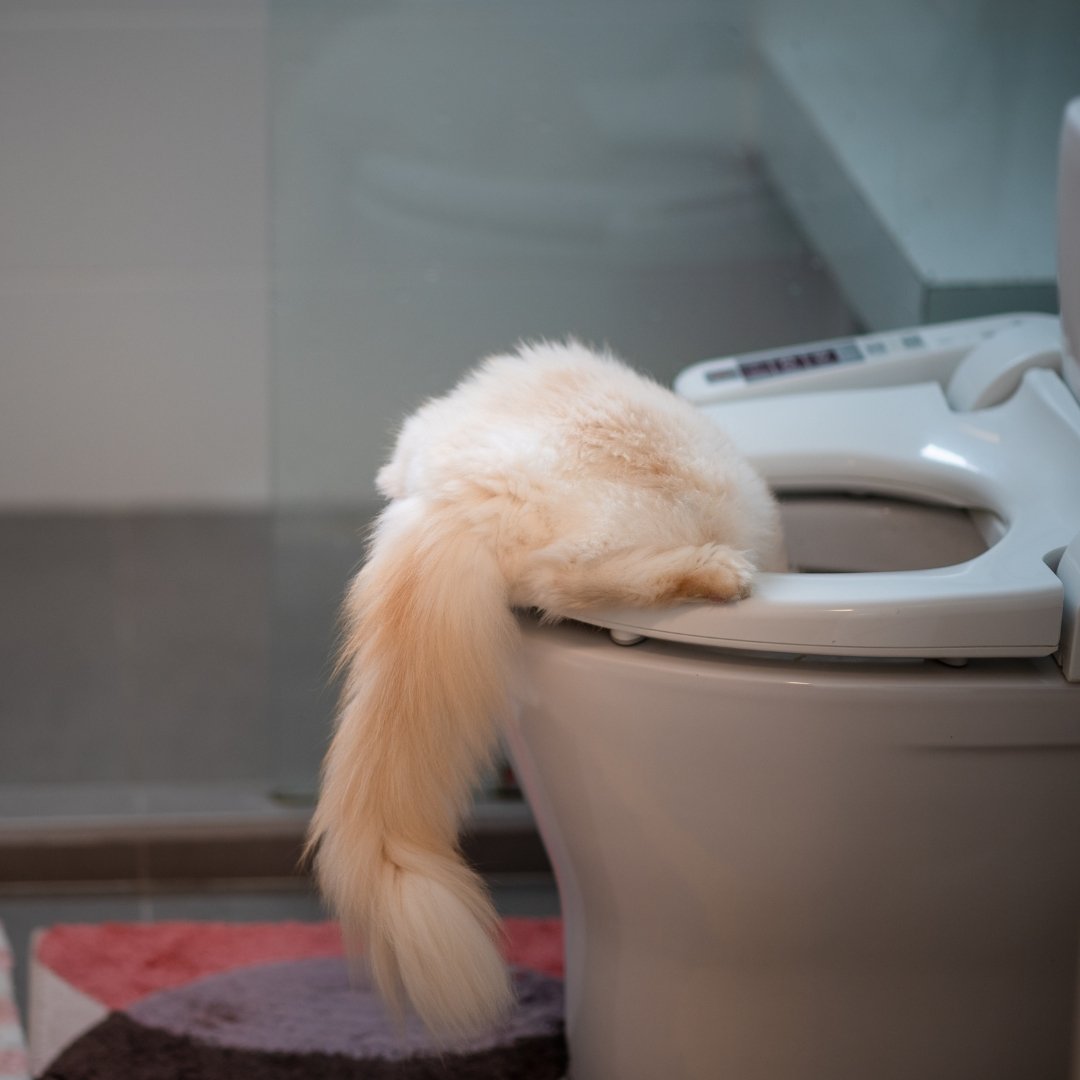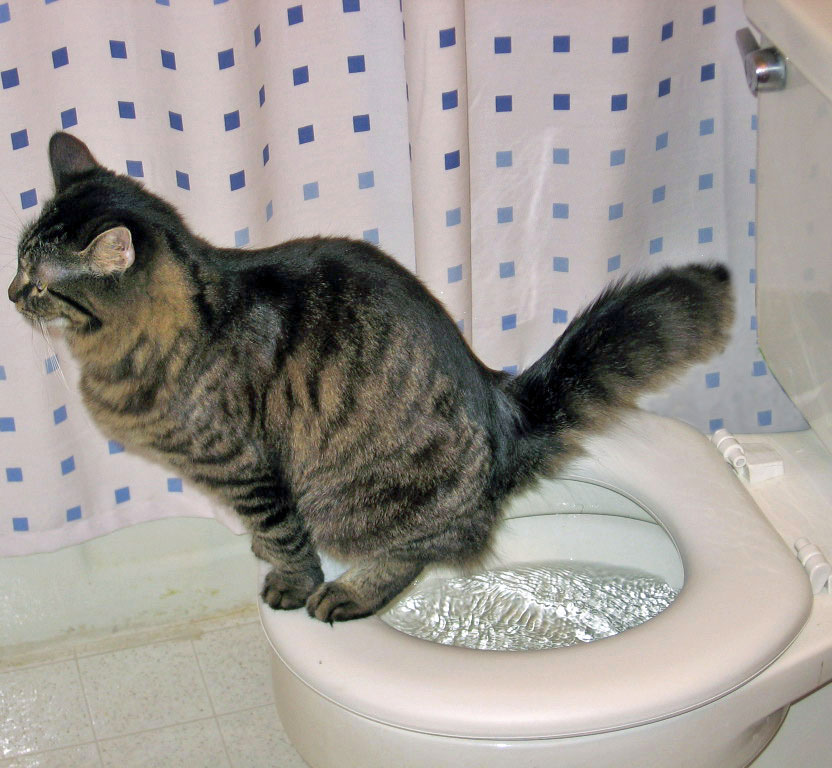Why Flushing Animal Waste Down the Toilet Could be Harmful
Why Flushing Animal Waste Down the Toilet Could be Harmful
Blog Article
The writer is making a few great points about Don't Flush Your Pets Poo Down The Loo, Vet Warns in general in this content further down.

When it concerns getting rid of waste, specifically animal waste, many individuals commonly turn to the convenient option of flushing it down the bathroom. Nonetheless, this apparently very easy option can have serious consequences for the atmosphere and public health. In this post, we'll explore why flushing pet waste down the commode is a poor concept and provide alternative approaches for correct disposal.
Intro
Proper waste disposal is crucial for maintaining environmental sustainability and public health. While it may appear safe to purge animal waste down the bathroom, it can cause numerous problems, both for the setting and human health.
Threats of flushing pet waste
Environmental impact
Flushing animal waste presents hazardous bacteria and virus into waterways, which can adversely influence aquatic communities. These microorganisms can pollute water sources and damage aquatic life, interrupting fragile communities.
Public health problems
Pet waste includes hazardous germs such as E. coli and Salmonella, which can present significant wellness threats to people. Flushing pet waste down the bathroom can pollute water products, bring about the spread of illness and infections.
Alternatives to flushing
Instead of flushing pet waste down the bathroom, there are a number of alternate disposal approaches that are more eco-friendly and sanitary.
Composting
Composting pet waste is an environmentally friendly means to dispose of it. By composting, raw material is broken down right into nutrient-rich dirt, which can be used to fertilize yards and plants.
Landfill disposal
Getting rid of pet waste in a garbage dump is another option. While not as environmentally friendly as composting, it is a safer alternative to flushing, as it avoids the contamination of water sources.
Pet waste disposal systems
There are specific family pet garbage disposal systems readily available that safely and hygienically get rid of animal waste. These systems often use enzymes to break down waste and get rid of smells.
Actions to appropriate pet waste disposal
To make certain proper disposal of pet waste, follow these actions:
Scooping and landing waste
Consistently scoop and bag pet waste using naturally degradable bags. This avoids waste from contaminating the atmosphere.
Utilizing designated waste bins
Dispose of bagged animal waste in designated waste bins, such as garden compost containers or garbage dump containers. Avoid flushing it down the bathroom at all costs.
Cleaning up can and pet dog areas consistently
On a regular basis tidy litter boxes and pet dog locations to prevent the accumulation of waste and bacteria. Use pet-safe cleansing products to keep health.
Benefits of appropriate disposal methods
Adopting correct disposal methods for pet waste offers a number of benefits:
Lowered environmental pollution
Proper disposal techniques reduce the danger of environmental pollution, protecting rivers and communities from contamination
Decreased threat of water contamination.
By staying clear of flushing animal waste down the commode, the danger of water contamination is significantly lowered, safeguarding public health.
Enhanced cleanliness and health
Correct disposal methods promote much better cleanliness and hygiene, creating a safer atmosphere for both people and animals.
Conclusion
Finally, purging pet waste down the toilet is dangerous to the environment and public health. By adopting different disposal approaches and following proper waste monitoring methods, we can decrease the unfavorable effect of animal waste and contribute to a cleaner, much healthier planet.
Why You Should Never Flush Cat Poop Down the Toilet
A rose by any other name might smell as sweet, but not all poop is created equal. Toilets, and our sewage systems, are designed for human excrement, not animal waste. It might seem like it couldn’t hurt to toss cat feces into the loo, but it’s not a good idea to flush cat poop in the toilet.
First and foremost, assuming your cat uses a litter box, any waste is going to have litter on it. And even the smallest amount of litter can wreak havoc on plumbing.
Over time, small amounts build up, filling up your septic system. Most litter sold today is clumping; it is made from a type of clay that hardens when it gets wet. Ever tried to scrape old clumps from the bottom of a litter box? You know just how cement-hard it can get!
Now imagine just a small clump of that stuck in your pipes. A simple de-clogger like Drano isn’t going to cut it. And that means it’s going to cost you big time to fix it.
For an amusing, graphic tale of what happens when you flush too much litter down the toilet all at once, take a few minutes to read Gene Weingarten’s 2017 Washington Post column “So that’s what happens when you flush cat litter down the toilet.”
Parasitic Contamination
Believe it or not, your healthy kitty may be harboring a nasty parasite. Only cats excrete Toxoplasma in their feces. Yet it rarely causes serious health issues in the cats that are infected. Most people will be fine too if infected. Only pregnant women and people with compromised immune systems are at risk. (If you’ve ever heard how women who are expecting are excused from litter cleaning duty, Toxoplasma is why.)
But other animals may have a problem if infected with the parasite. And human water treatment systems aren’t designed to handle it. As a result, the systems don’t remove the parasite before discharging wastewater into local waterways. Fish, shellfish, and other marine life — otters in particular — are susceptible to toxoplasma. If exposed, most will end up with brain damage and many will die.
Depending on the species of fish, they may end up on someone’s fish hook and, ultimately on someone’s dinner plate. If that someone has a chronic illness, they’re at risk.
Skip the Toilet Training
We know there are folks out there who like to toilet train their cats. And we give them props, it takes a lot of work. But thanks to the toxoplasma, it’s not a good idea.
Leave the toilet to the humans, and accept your future litter cleaning duty.

On a regular basis tidy litter boxes and pet dog locations to prevent the accumulation of waste and bacteria. Use pet-safe cleansing products to keep health.
Benefits of appropriate disposal methods
Adopting correct disposal methods for pet waste offers a number of benefits:
Lowered environmental pollution
Proper disposal techniques reduce the danger of environmental pollution, protecting rivers and communities from contamination
Decreased threat of water contamination.
By staying clear of flushing animal waste down the commode, the danger of water contamination is significantly lowered, safeguarding public health.
Enhanced cleanliness and health
Correct disposal methods promote much better cleanliness and hygiene, creating a safer atmosphere for both people and animals.
Conclusion
Finally, purging pet waste down the toilet is dangerous to the environment and public health. By adopting different disposal approaches and following proper waste monitoring methods, we can decrease the unfavorable effect of animal waste and contribute to a cleaner, much healthier planet.
Why You Should Never Flush Cat Poop Down the Toilet
A rose by any other name might smell as sweet, but not all poop is created equal. Toilets, and our sewage systems, are designed for human excrement, not animal waste. It might seem like it couldn’t hurt to toss cat feces into the loo, but it’s not a good idea to flush cat poop in the toilet.
First and foremost, assuming your cat uses a litter box, any waste is going to have litter on it. And even the smallest amount of litter can wreak havoc on plumbing.
Over time, small amounts build up, filling up your septic system. Most litter sold today is clumping; it is made from a type of clay that hardens when it gets wet. Ever tried to scrape old clumps from the bottom of a litter box? You know just how cement-hard it can get!
Now imagine just a small clump of that stuck in your pipes. A simple de-clogger like Drano isn’t going to cut it. And that means it’s going to cost you big time to fix it.
For an amusing, graphic tale of what happens when you flush too much litter down the toilet all at once, take a few minutes to read Gene Weingarten’s 2017 Washington Post column “So that’s what happens when you flush cat litter down the toilet.”
Parasitic Contamination
Believe it or not, your healthy kitty may be harboring a nasty parasite. Only cats excrete Toxoplasma in their feces. Yet it rarely causes serious health issues in the cats that are infected. Most people will be fine too if infected. Only pregnant women and people with compromised immune systems are at risk. (If you’ve ever heard how women who are expecting are excused from litter cleaning duty, Toxoplasma is why.)
But other animals may have a problem if infected with the parasite. And human water treatment systems aren’t designed to handle it. As a result, the systems don’t remove the parasite before discharging wastewater into local waterways. Fish, shellfish, and other marine life — otters in particular — are susceptible to toxoplasma. If exposed, most will end up with brain damage and many will die.
Depending on the species of fish, they may end up on someone’s fish hook and, ultimately on someone’s dinner plate. If that someone has a chronic illness, they’re at risk.
Skip the Toilet Training
We know there are folks out there who like to toilet train their cats. And we give them props, it takes a lot of work. But thanks to the toxoplasma, it’s not a good idea.
Leave the toilet to the humans, and accept your future litter cleaning duty.

Do you like more info about 10 Things You Should Never Flush Down The Toilet? Write a short review down below. We'd be glad to hear your thinking about this entry. In hopes that you come back again later on. So long as you enjoyed our blog entry plz be sure to share it. Thank you for going through it.
Details Report this page